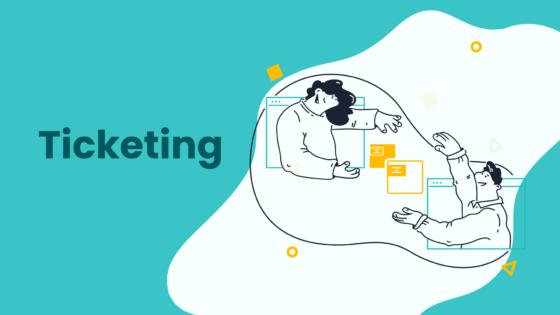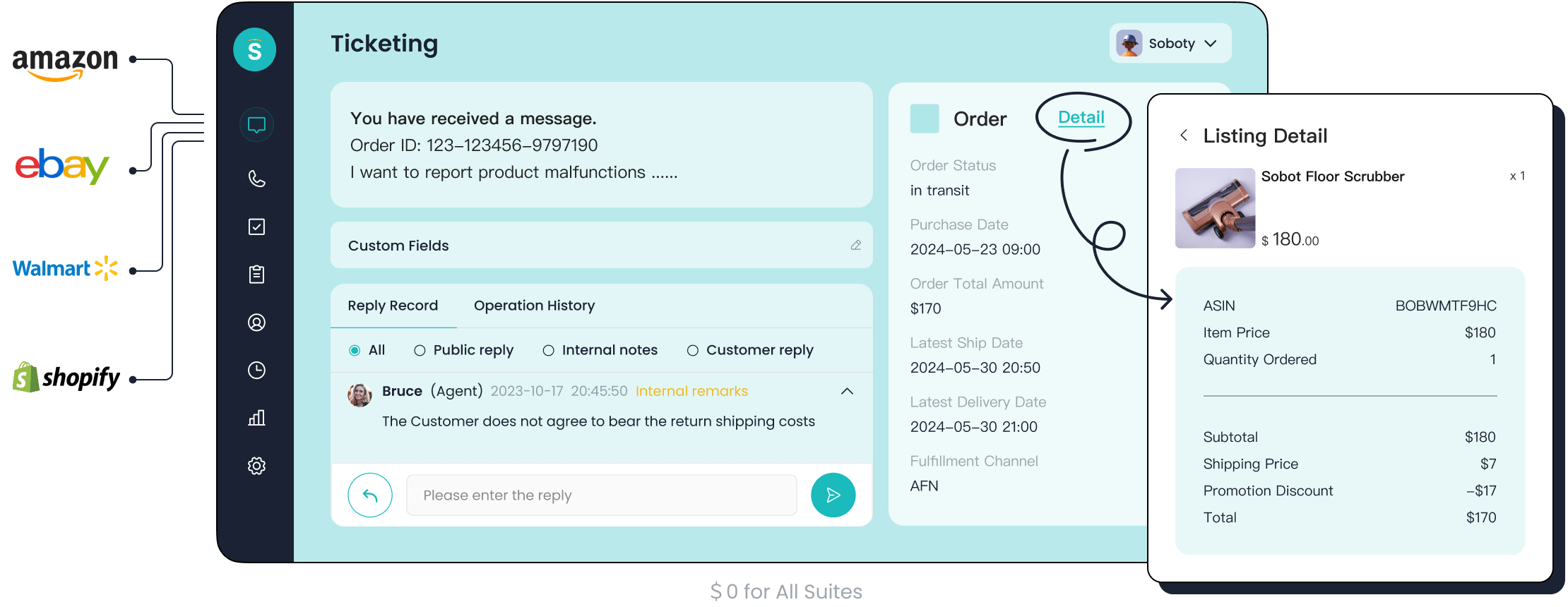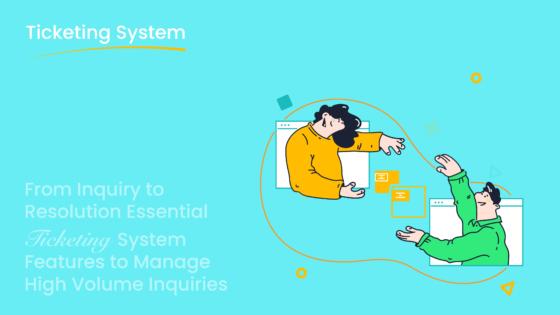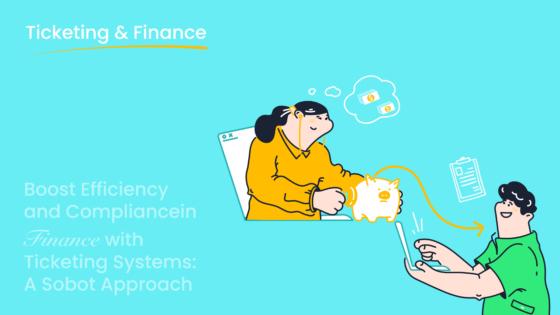Customers and Clients Defined and Compared for Businesses

A customer buys a product or service, while a client receives ongoing, personalized support or advice. The main difference between customers and clients is the depth of the relationship—clients often require more tailored service over time. This distinction shapes how you set your business goals and measure success. For example, tracking metrics like Customer Lifetime Value or Net Promoter Score helps you see how customers and clients respond to your service. Sobot AI offers a Ticketing System that lets you manage both customers and clients efficiently, helping you boost satisfaction and retention.
Customer and Client Definitions
What Is a Customer?
A customer is someone who buys a product or service from a business. You might visit a store, pick out an item, pay for it, and leave. That makes you a customer. In business, customers often make one-time or short-term purchases. For example, when you order a coffee at a café or buy a phone online, you act as a customer. Businesses collect different types of customer data, such as your name, purchase history, and feedback. This information helps companies like Sobot create better experiences for you. Sobot’s Ticketing System lets businesses track every customer interaction, making it easier to solve problems and answer questions quickly. Companies use this data to understand what you like and how to serve you better.

What Is a Client?
A client is someone who receives ongoing, personalized support or advice from a business. You become a client when you work with a company over time, often for services that need trust and expertise. For example, if you hire a lawyer, accountant, or marketing agency, you are a client. Clients expect more than just a product—they want guidance and solutions. Many businesses, like those using Sobot’s contact center solutions, build long-term relationships with clients. These relationships often involve regular meetings, updates, and tailored advice. Sobot helps companies manage these connections by keeping all client information and communication in one place, making it easy to provide personal service.
Key Differences
You can see the main differences between a client and a customer in the table below:
| Aspect | Customer | Client |
|---|---|---|
| Relationship | Usually short-term | Long-term, ongoing |
| Service Type | Transactional (buy and go) | Personalized, advisory |
| Business Approach | Focus on sales and quick service | Focus on trust and partnership |
| Example | Buying shoes at a store | Hiring a consultant for your business |
The difference between client and customer shapes how businesses interact with you. Customers want fast, efficient service. Clients need ongoing support and advice. Sobot’s experience shows that using the right tools, like the Ticketing System, helps manage both types of relationships. Understanding the differences between a client and a customer helps you choose the best approach for your business.
Difference Between Customers and Clients

Understanding the difference between customers and clients helps you choose the right approach for your business. You can see how these two groups shape your service, support, and long-term strategy. Let’s break down the customer vs client differences in three key areas.
Relationship Type
The relationship you build with a customer is not the same as with a client. Customers usually have short-term or one-time interactions. For example, you might buy a pair of shoes from a store and never return. Clients, on the other hand, expect a long-term, ongoing relationship. You might work with a financial advisor for years, getting regular advice and support.
Companies that focus on clients often see 40% more revenue from personalization than those that do not. This shows how important it is to understand the difference between customers and clients.
Here’s a table that highlights these relationship types across industries:
| Aspect | Client | Customer |
|---|---|---|
| Relationship Duration | Ongoing, long-term relationship | One-time or infrequent interaction |
| Personalization | Requires personalized attention and specialized services | Focuses on transactional exchange, less personalized |
| Expertise | Needs specialized expertise | Varied needs, less specialized |
| Pricing | Higher fees due to personalized services | Lower margins, higher volume sales |
| Relationship Basis | Trust and mutual understanding | Convenience and accessibility focused |
| Hospitality Industry | Organizations contracting for services (e.g., corporate clients) | Individuals or groups purchasing directly (e.g., hotel guests) |
| Business Importance | Long-term contracts, repeat business, tailored marketing | Transactional sales, convenience-driven marketing |
Sobot’s Ticketing System helps you manage both types of relationships by keeping all interactions organized, whether you serve customers or clients.
Engagement and Service
You engage with customers and clients in different ways. Customers want quick, convenient service. They expect fast answers and easy solutions. For example, when you contact a support team about a product issue, you want a quick fix. Clients need more personalized and ongoing support. They look for advice, regular updates, and a deeper connection.
- Clients engage in long-term relationships and need specialized services.
- Customers usually have one-time or infrequent transactions with less personalized service.
- Client relationships rely on trust and higher fees for specialized attention.
- Customers focus on convenience and accessibility.
Studies show that client engagement is more complex. Clients need both emotional and practical support. Businesses must overcome barriers like skepticism or social disadvantages to keep clients engaged. This means you need to tailor your service levels. Sobot’s Ticketing System lets you set up custom workflows for both customers and clients, making sure everyone gets the right level of attention.
Business Approach
Your business approach changes based on whether you serve customers or clients. With customers, you focus on sales volume, quick service, and convenience. You track metrics like Net Promoter Score (NPS), customer satisfaction, and retention rate. These help you see how well you meet customer needs.
With clients, you focus on building trust, offering expert advice, and creating long-term value. You might use metrics like Average Revenue Per Account (ARPA) and strategic alignment to measure success. The Balanced Scorecard framework helps you align your business goals with the needs of both customers and clients.
- Net Promoter Score (NPS): Measures loyalty and likelihood to recommend.
- Customer Satisfaction: Shows how well you meet expectations.
- Loyalty Rate: Tracks repeat business.
- Customer Retention Rate: Measures how many customers stay over time.
Sobot’s Ticketing System supports both approaches. You can automate ticket assignment, track response times, and analyze performance for both customers and clients. This unified platform helps you deliver the right service, no matter who you serve.
Tip: Using a system like Sobot’s Ticketing System gives you a clear view of the difference between customers and clients. You can adjust your strategy to fit each group and improve your results.
By understanding the difference between customers and clients, you can create better experiences, boost loyalty, and grow your business.
Client vs Customer in Business
Typical Scenarios
You see the client vs customer difference in many business situations. For example, when you buy a new phone from a store, you act as a customer. You make a quick purchase and leave. In contrast, when you hire a marketing agency to help your business grow, you become a client. You expect ongoing advice, regular updates, and a relationship built on trust.
Businesses often use both qualitative and quantitative methods to understand these groups. Case studies show that companies use surveys and behavior analysis to learn what customers want. This helps them improve products and services. On the other hand, numerical analyses help businesses track how clients use services over time. For example, companies use data models and dashboards to measure how well they serve clients. These tools help you make better decisions and improve your business operations.
Note: Understanding the client vs customer difference helps you choose the right approach for each group. You can use data and feedback to improve satisfaction for both.
Sobot Solutions
Sobot gives you the tools to manage both clients and customers with ease. The Ticketing System lets you track every customer request, no matter if it is a one-time question or an ongoing issue from a client. For example, Agilent saw a sixfold increase in customer service efficiency after using Sobot. Samsung reached a 97% customer satisfaction rate with Sobot’s contact center solution. These results show how Sobot helps you handle customer needs quickly and accurately.
Clients also benefit from Sobot’s solutions. J&T Express improved its sign-off rate by 35% and its COD collection rate by 40% after partnering with Sobot. Michael Kors uses Sobot to manage communications at every stage of the customer lifecycle, showing that the platform works for both clients and customers. The Marketing Solution from Sobot helps you create campaigns that reach both groups, using data to personalize messages and boost engagement.
You can see that Sobot’s products support clients and customers in many industries. Whether you need to solve a quick problem or build a long-term partnership, Sobot gives you the right tools to succeed.
Key Differences for Service and Support

Understanding the key differences between customers and clients helps you improve your service and support strategies. When you know what sets these groups apart, you can design better contact center operations and business plans. Sobot’s Ticketing System gives you a single platform to manage both, making it easier to meet customer needs and build strong client relationships.
Customer Service Strategies
You need clear strategies to serve customers well. Customers often want fast answers and easy solutions. You can measure your success using important metrics. Here is a table that shows some of the most useful ones:
| Metric Name | What it Measures | Why It Matters |
|---|---|---|
| Customer Satisfaction (CSAT) | Immediate happiness after service | Shows if you meet customer needs |
| Net Promoter Score (NPS) | Loyalty and willingness to recommend | Predicts growth and advocacy |
| Customer Effort Score (CES) | Ease of getting help | Finds friction points in your process |
| First Response Time | Speed of first reply | Impacts satisfaction and trust |
| Resolution Rate | How many issues you solve | Validates your problem-solving strategies |
Tracking these metrics helps you spot the key differences in how you serve customers and clients. Sobot’s Ticketing System lets you monitor these numbers in real time, so you can adjust your approach quickly.
Client Relationship Management
Clients expect more than quick fixes. They want ongoing support, advice, and a relationship built on trust. Good client relationship management (CRM) focuses on personalized service, value, and retention. Studies show that CRM can increase revenue per employee and boost profitability by up to 41% (source). Retaining clients costs less than finding new ones, so investing in CRM pays off. You should use tools that help you track every interaction, share knowledge, and keep clients happy. Sobot’s Ticketing System supports these goals by keeping all client data and conversations in one place.
Tip: Innovation in CRM helps you meet growing client demands and stay ahead in a competitive market.
Sobot Ticketing System Benefits
Sobot’s Ticketing System brings together all your service and support needs. You can handle requests from both customers and clients in one place. The system automates ticket assignment, tracks response times, and supports multiple languages. This unified approach helps you see the key differences in how you serve each group. You can set custom workflows for clients who need ongoing support and use quick-response templates for customers who want fast answers. With Sobot, you get trusted analytics to measure performance and improve your strategy.
Difference Between Clients and Customers in Marketing
Marketing Approaches
You need to understand the difference between clients and customers when you plan your marketing. Clients want a long-term relationship. They look for trust, advice, and ongoing support. Customers often make quick decisions. They want clear information and proof that your product works.
You use different strategies for each group. For clients, you focus on building trust and showing your expertise. You might share case studies or offer personal consultations. For customers, you highlight reviews, ratings, and quick benefits. Social proof matters a lot. In fact, 95% of people say customer reviews affect what they buy (source). Companies that listen to the voice of the customer grow almost 10 times faster than others. You can collect testimonials and survey data to learn why customers choose you. This helps you create messages that speak to both clients and customers.
You see this difference between clients and customers in many industries. For example, a law firm markets its services to clients by showing success stories and offering free consultations. A retail store markets to customers by sharing discounts and customer ratings.
Sobot Marketing Solution
Sobot’s Marketing Solution helps you manage the difference between clients and customers with ease. You can create campaigns that target each group in the right way. For clients, Sobot lets you build personalized journeys. You can send updates, share expert advice, and track every interaction. This helps you keep clients engaged and loyal.
For customers, Sobot gives you tools to send bulk messages, share offers, and collect feedback. You can use customer data to send the right message at the right time. Sobot’s dashboard shows you how each campaign performs. You see which messages work best for clients and which ones attract new customers.
Sobot’s platform supports voice, WhatsApp, and SMS. You reach both clients and customers on their favorite channels. You can also use analytics to see the difference between clients and customers in your results. This helps you improve your marketing and grow your business.
You can see clear differences between customers and clients. Customers often want quick solutions and simple service. Clients expect ongoing support and trust. Sobot helps you manage both groups with tools like the Ticketing System and Marketing Solution.
- Sobot’s AI Agent reduces manual work by up to 90% and increases direct response rates for clients and customers.
- Renogy improved response rates by 35% and answer accuracy by 27% after using Sobot.
- Sobot’s AI supports multilingual service, helping you reach international clients and customers.
| Feature | Benefit for Clients and Customers |
|---|---|
| AI Agent | Faster, more accurate responses |
| Multilingual | Supports global clients and customers |
| Humanized Service | Keeps customer experience personal |
You should review your current strategies and use Sobot’s solutions to improve how you serve both clients and customers.
FAQ
What is the main difference between customers and clients?
You see the main difference between customers and clients in the relationship. Customers usually make one-time purchases. Clients expect ongoing, personalized service. This difference shapes your business approach and support strategies.
Why does the difference between customers and clients matter for my business?
You need to know the difference between customers and clients to choose the right service and marketing strategies. For example, Sobot’s Ticketing System lets you manage both types efficiently, improving satisfaction and retention.
How does Sobot help manage the client vs customer relationship?
Sobot’s Ticketing System unifies all communication channels. You can track every interaction, automate ticket assignment, and set custom workflows. This helps you handle the difference between clients and customers with ease.
Can I use the same marketing approach for clients and customers?
You should not use the same approach. Clients want long-term value and trust. Customers look for quick solutions. Sobot’s Marketing Solution lets you personalize campaigns for both, increasing engagement and ROI.
Where can I learn more about the difference between clients and customers?
You can read more on Sobot’s official website. You will find resources that explain the difference between customers and clients, client vs customer scenarios, and how Sobot’s solutions support both groups.
See Also
Best Voice of Customer Platforms Reviewed and Compared
Leading Live Chat Solutions: Shopify Compared to Rivals
Best Customer Support Software Options for 2024 Ranked